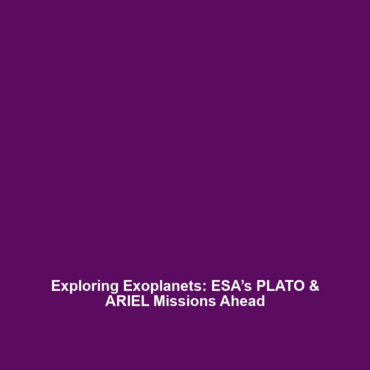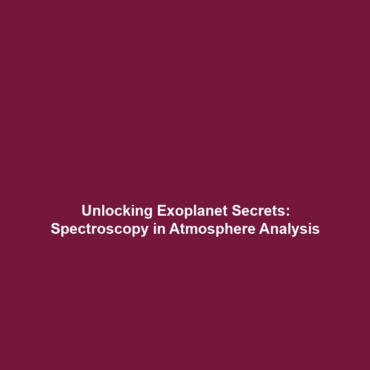Water and Life Potential: Understanding its Importance in the Search for Exoplanets
Introduction
Water is essential for life as we know it, making its presence on other celestial bodies a critical focus in the search for extraterrestrial life. As astronomers explore exoplanets—planets outside our solar system—the detection of water, in any form, significantly enhances the possibility of finding habitable environments. Understanding Water and Life Potential not only sheds light on the conditions necessary for life but also informs us about the broader implications for humanity’s quest to understand the universe. Furthermore, specific exoplanets have already shown promising signs of water, making this an exciting field of study.
Key Concepts
Water as a Life Indicator
The presence of water is a fundamental criterion in assessing a planet’s potential for life. Key concepts include:
- Habitability Zone: Water is most likely to exist in liquid form within a star’s habitable zone, often referred to as the Goldilocks zone.
- Types of Water: Both liquid water and ice can indicate potential for life. Even traces of water vapor are significant.
- Exoplanets with Water: Several exoplanets have demonstrated signs of water, including Proxima Centauri b, K2-18 b, and Kepler-186f.
Applications and Real-World Uses
Understanding Water and Life Potential in the context of exoplanets has several applications:
- Astrobiology: Researchers utilize knowledge of water’s role to identify ideal candidates for life detection in astrobiology.
- Space Exploration: Missions targeting exoplanets often prioritize those with evidence of water for future exploration.
- Planetary Science: Studies on the evolution of planets are informed by the presence or absence of water in their systems.
Current Challenges
Studying Water and Life Potential comes with its own set of challenges:
- Detection Limitations: Current technology limits our ability to detect and analyze water on distant exoplanets.
- Data Interpretation: Differentiating between false positives and genuine signs of water remains complicated.
- Environmental Variability: The unique conditions of exoplanets can complicate predictions about habitability.
Future Research and Innovations
Future research is poised to address the gaps in our understanding of Water and Life Potential. Key areas of focus include:
- Advancements in Telescopes: Next-generation telescopes are being developed to improve the identification of water signatures in exoplanet atmospheres.
- Interdisciplinary Approaches: Combining insights from chemistry, biology, and planetary science to enhance our understanding of habitability.
- Artificial Intelligence: AI is increasingly being leveraged to analyze data efficiently and predict potential water presence on exoplanets.
Conclusion
The significance of Water and Life Potential in the search for extraterrestrial life cannot be overstated. By prioritizing the search for water in studies of exoplanets, scientists enhance our understanding of where and how life might exist beyond Earth. Continued research and technological innovation will pave the way for exciting discoveries in the realms of astrobiology and planetary science. For further exploration of this fascinating topic, consider our resources on recent exoplanet discoveries and the field of astrobiology.









